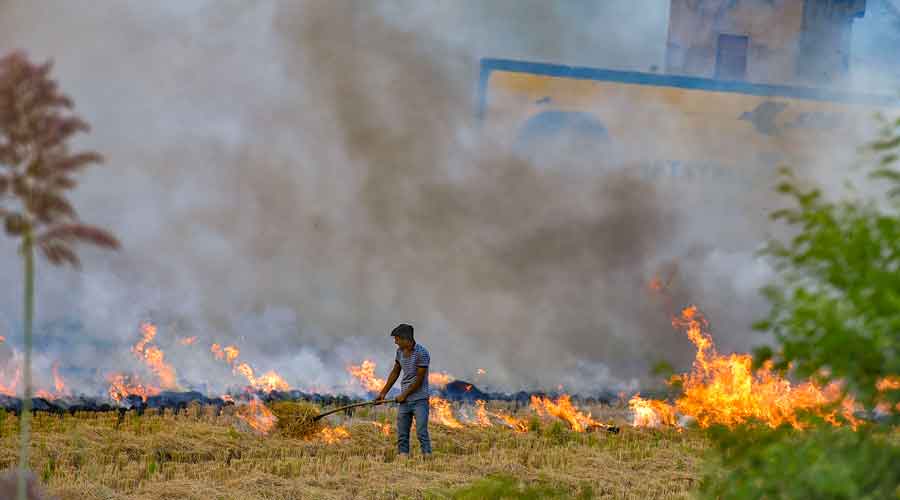Cow dung, wood, and other biomass fires for cooking food, heating water and keeping warm remain big air pollution sources along the Indo-Gangetic plains despite the vastly increased proportions of households covered by liquefied petroleum gas.
Researchers studying biofuel burning have estimated that only nine per cent of households currently use cow dung as fuel, but contribute to 50 per cent of aerosol particles from the residential sector. Their studies have also suggested that biomass burning for warmth in winter causes on average greater air pollution than paddy residue burning in the northwestern states, long blamed for air pollution spikes.
“We see large contributions from sources that have not been easy to measure,” said Baerbel Sinha, an atmospheric chemistry specialist and associate professor at the department of earth and environmental sciences at the Indian Institute of Science Education and Research (IISER) in Mohali (Punjab).
The studies by Sinha and her colleagues have found wood or other biomass fires set by people trying to keep themselves warm or heat water during the winter months can on average increase particulate matter sized 2.5 microns emissions by about 151 micrograms per cubic metre.
They observed the rise in emissions triggered by paddy residue burning — a traditional practice farmers employ to prepare their land for the next crop — to be about 97 micrograms per cubic metre, greater than the increase observed during harvesting activities but less than heating.
Through a study at several rural sites in Punjab, the scientists observed that even after paddy residue burning had stopped, the emissions from burning of wood and other biomass for personal heating requirements rose as average temperatures dipped from 17°C to 9°C.
While paddy residue burning lasts for about a month, the emissions from biomass burning for heating continue to impair air quality through December, January and February. “These small heating fires are hard to quantify as they can’t be imaged by satellites,” said Sinha.
The IISER researchers have published their findings in the research journals Atmospheric Environment and Environmental Pollution. Their findings underline how many households continue to rely on biomass fires despite LPG and electricity coverage expansion.
The proportion of households across India relying on LPG has increased from less than 20 per cent in 2000 to more than 60 per cent by 2020. Alongside that expansion, a 19 per cent reduction in residential solid biomass fuel use between 2010 and 2020 has helped improve air quality.
More than 97 per cent of households across India had electricity supply in 2020, but not all received power 24 hours a day. A residential energy survey by the Council for Energy Environment and Water in 2020 had found power outages lasting up to six hours in parts of Assam, Bihar, Haryana, Jharkhand and Uttar Pradesh.
The IISER researchers have called for air quality programmes that fast-track installation of biogas plants for households that continue to rely on cow dung for fuel. New funding mechanisms would be required to help low-income households establish biogas plants or refill LPG cylinders more frequently, they said.











